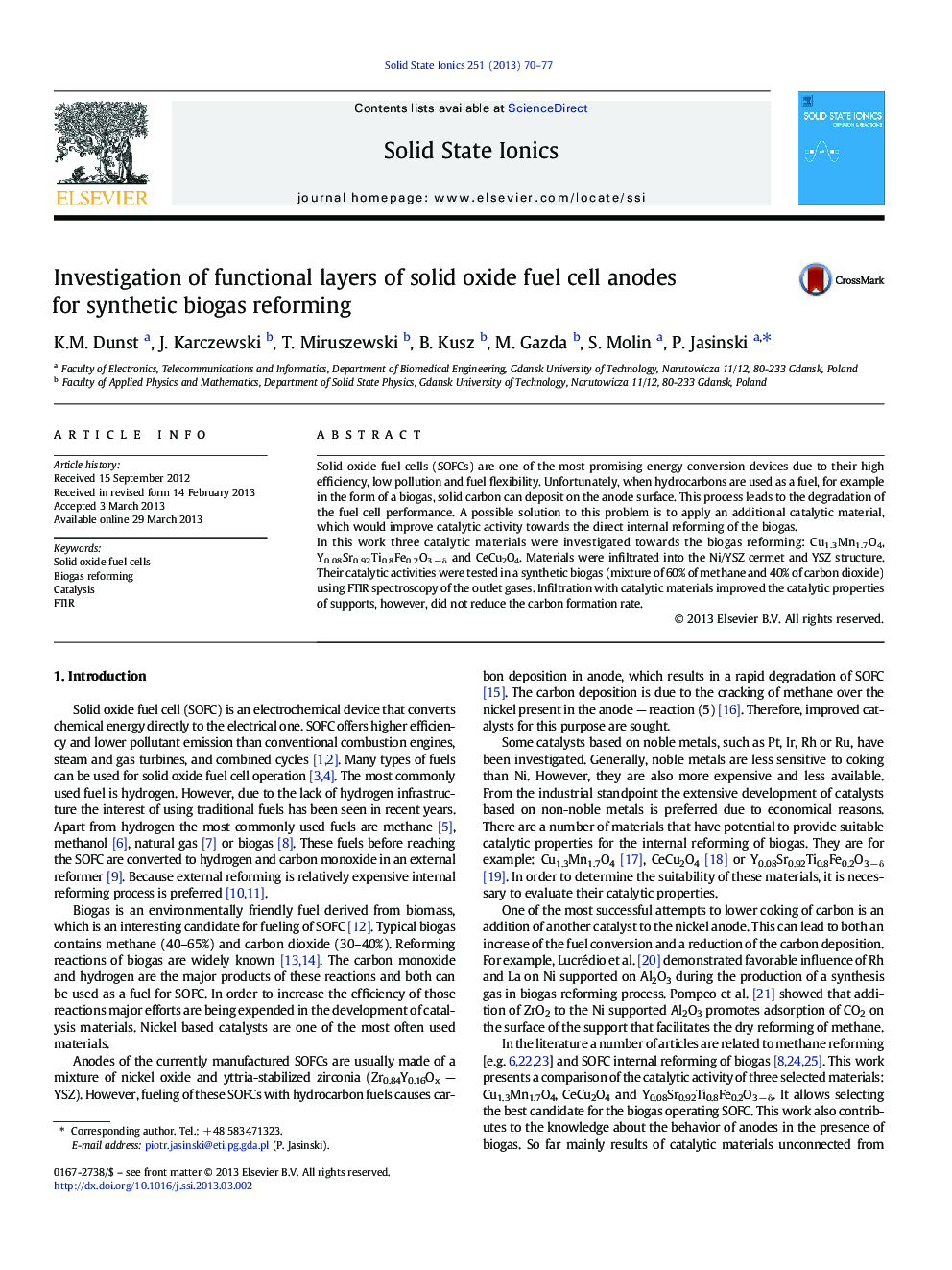| Article ID | Journal | Published Year | Pages | File Type |
|---|---|---|---|---|
| 1295775 | Solid State Ionics | 2013 | 8 Pages |
•Catalysts were investigated towards biogas reforming for SOFC application.•Catalysts were infiltrated into Ni/YSZ and YSZ supports.•Catalytic activity was studied by FTIR spectroscopy.•Infiltration with catalytic materials improved catalytic properties of anode material.
Solid oxide fuel cells (SOFCs) are one of the most promising energy conversion devices due to their high efficiency, low pollution and fuel flexibility. Unfortunately, when hydrocarbons are used as a fuel, for example in the form of a biogas, solid carbon can deposit on the anode surface. This process leads to the degradation of the fuel cell performance. A possible solution to this problem is to apply an additional catalytic material, which would improve catalytic activity towards the direct internal reforming of the biogas.In this work three catalytic materials were investigated towards the biogas reforming: Cu1.3Mn1.7O4, Y0.08Sr0.92Ti0.8Fe0.2O3 − δ and CeCu2O4. Materials were infiltrated into the Ni/YSZ cermet and YSZ structure. Their catalytic activities were tested in a synthetic biogas (mixture of 60% of methane and 40% of carbon dioxide) using FTIR spectroscopy of the outlet gases. Infiltration with catalytic materials improved the catalytic properties of supports, however, did not reduce the carbon formation rate.
